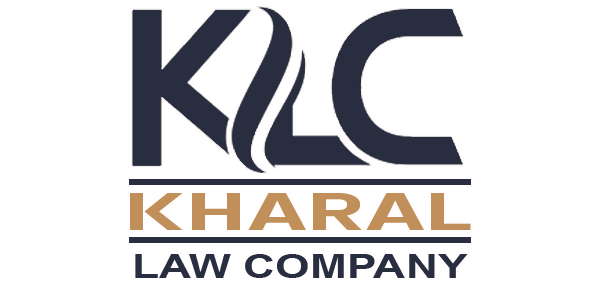Content

This equation holds true for all business activities and transactions. If assets increase, either liabilities or owner’s equity must increase to balance out the equation.
Double-entry accounting is a way to keep track of your business’s finances by tracking every transaction that happens. This means if you buy something for $500, and it shows up as an asset on one side of the equation, then there must also be a liability or equity account entry with equal value. For example, when buying commercial property using loans from lenders like what is the accounting equation banks – both sides should increase because they’re related transactions. However, understanding how all these numbers work together will help you understand your financial health. It will also empower you to make smarter decisions about what comes next. On the other hand, the accounting equation reveals the relationship between assets, liabilities, and equity.
Accounting basics for small businesses
It will always be true as long as all transactions are appropriately accounted for and can never fail or be out of balance for any given entity. It can also cause problems with taxes and audits, as well as customers who may suspect fraud or mishandling of funds as a result of an unbalanced equation. The effect of this transaction is an increase in both asset and equity for the amount of $10,000. Successful branding is why the Armani name signals style, exclusiveness, desirability. Branding is why the Harley Davidson name makes a statement about lifestyle. Strong branding ultimately pays off in customer loyalty, competitive edge, and bankable brand equity.
Ledger AccountLedger in accounting records and processes a firm’s financial data, taken from journal entries. This becomes an important financial record for future reference. It is shown as the part of owner’s equity in the liability side of the balance sheet of the company. Now you have expanded your business, you have suppliers of raw materials. Although these equations seem straightforward, they can become more complicated in reality. This transaction affects only the assets of the equation; therefore there is no corresponding effect in liabilities or shareholder’s equity on the right side of the equation.
Payment of Accounts Payable
An income statement is prepared to reflect the company’s total expenses and total income to calculate the net income for different purposes. This statement is also prepared in the same conjunction as the balance sheet. We calculate the expanded accounting equation using 2021 financial statements for this example. Balance Sheets shown above and the Income Statement and detailed Statement of Stockholder’s Equity in this section. The accounting equation is also called the basic accounting equation or the balance sheet equation. These obligations range from bank loans to accounts payable.
To understand the purpose of the accounting equation, it’s first helpful to take a closer look at double-entry accounting. At the heart of this is the balance sheet, which shows a balance of total assets, total liabilities, and shareholder equity. Notice that the left hand side of the equation shows the resources owned by the business and the right hand side shows the sources of funds used to acquire these resources. All assets owned by a business are acquired with the funds supplied either by creditors or by owner.
How to Calculate the Accounting Equation?
This formula is less about calculating a specific number and more about finding a way to balance your financials. After six months, Speakers, Inc. is growing rapidly and needs to find a new place of business. Ted decides it makes the most financial sense for Speakers, Inc. to buy a building. Since Speakers, Inc. doesn’t have $500,000 in cash to pay for a building, it must take out a loan. Speakers, Inc. purchases a $500,000 building by paying $100,000 in cash and taking out a $400,000 mortgage. This business transaction decreases assets by the $100,000 of cash disbursed, increases assets by the new $500,000 building, and increases liabilities by the new $400,000 mortgage. Not only does the accounting equation underpin all accounting entries, but it also forms the exact structure of one of accounting’s most important reports – the balance sheet.
A company’s equity is what remains after a business has paid all of its creditors. An asset is what gives your business added value on top of cash flow. Subsequently, a business’s assets can include cash, liquid assets (i.e., certificates of deposit and Treasury bills), prepaid expenses, equipment, inventory, and property. In fact, just about anything the company owns is classified as an asset. Money that customers owe for their purchases is called accounts receivable. These are in a class with other items worth owning like land or buildings. Leases can’t make it on this list because they’re not technically owned by the company.
Relationship to Double Entry Accounting
The accounting equation doesn’t consider the type of assets and liabilities on your balance sheet. It simply takes the total of each category to complete the equation. Created more than 500 years ago, the basic accounting equation continues to serve as the foundation of double-entry accounting. The double-entry system ensures that for every transaction recorded to an account as a debit, a corresponding entry must be entered to another account as a credit. This formula for balancing accounts dates back to before the Italian Renaissance, when accountants used a similar equation to keep track of accounts. The buyer purchases the merchandise inventory with cash and makes two journal entries. Firstly, the buyer debits Merchandise Inventory, a Current assets account.
- Knowing how to use equations in accounting is a valuable skill, but it takes research and practice.
- They are things that add value to the business and will bring it benefits in some form.
- The Accounting Equation is the foundation of double-entry accounting because it displays that all assets are financed by borrowing money or paying with the money of the business’s shareholders.
- Examples of liabilities are accounts payable, short-term debt borrowings, and long-term debts.
Thus, the accounting equation is an essential step in determining company profitability. The accounting equation equates a company’s assets to its liabilities and equity. This shows all company assets are acquired by either debt or equity financing. For example, when a company is started, its assets are first purchased with either cash the company received from loans or cash the company received from investors. Thus, all of the company’s assets stem from either creditors or investors i.e. liabilities and equity. In above example, we have observed the impact of twelve different transactions on accounting equation.
This article gives a definition of accounting equation and explains double-entry bookkeeping. We show formulas for how to calculate it as a basic accounting equation and an expanded accounting equation. The accounting equation shows on a company’s balance that a company’s total assets are equal to the sum of the company’s liabilities and shareholders’ equity.
It is also known as the Balance Sheet Equation & it forms the basis of the double-entry accounting system. Anyone who is studying accounting or have already studied, they start their basic from the accounting equation. The reason for this is that this is the accounting equation formula which is the basic foundation of the double-entry accounting system. It is also known as an Accounting Equation balance sheet since it tells us the relation between balance sheet items i.e. Knowing how to calculate retained earnings helps business owners to perform a more in-depth financial analysis. Also, the statement of retained earnings allows owners to analyse net income after accounting for dividend payouts.
The accounting equation is fundamental to the double-entry accounting system and, put simply, it states that the assets of a business must equal its liabilities & owner’s equity. This straightforward relationship between assets, liabilities, and equity is considered to be the foundation of the double-entry accounting system. The accounting equation ensures that the balance sheet remains balanced. That is, each entry made on the debit side has a corresponding entry on the credit side. The accounting equation states that a company’s total assets are equal to the sum of its liabilities and its shareholders’ equity. The purpose of this formula is to track your assets and liabilities.
A liability is something a person or company owes, usually a sum of money. The global adherence to the double-entry accounting system makes the account keeping and tallying processes more standardized and more fool-proof. Debt is a liability, whether it is a long-term loan or a bill that is due to be paid. The major and often largest value asset of most companies be that company’s machinery, buildings, and property.
Accounting Equation Definition
Keeping track of the revenues and finances of your small or big business is surely a full time job, so you may need to create a financial position to handle these duties within your business. Regardless of how the accounting equation is represented, it is important to remember that the equation must always balance. The accounting equation is considered to be the foundation of the double-entry accounting system. Long-term liabilities are usually owed to lending institutions and include notes payable and possibly unearned revenue. We can pull various reports like your profit and loss (P&L) statement and your balance sheet. Our software can even create different reporting windows that align with your fiscal year.
How do we calculate revenue?
Revenue (sometimes referred to as sales revenue) is the amount of gross income produced through sales of products or services. A simple way to solve for revenue is by multiplying the number of sales and the sales price or average service price (Revenue = Sales x Average Price of Service or Sales Price).
As you can see, shareholder’s equity is the remainder after liabilities have been subtracted from assets. This is because creditors – parties that lend https://www.bookstime.com/ money such as banks – have the first claim to a company’s assets. Shareholder Equity is equal to a business’s total assets minus its total liabilities.


